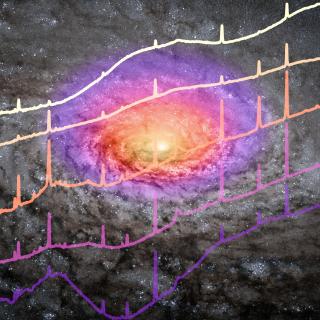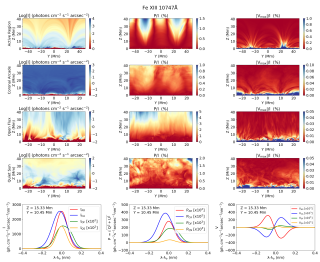The best spectrographs are limited in stability by their calibration light source. Laser frequency combs are the ideal calibrators for astronomical spectrographs. They emit a spectrum of lines that are equally spaced in frequency and that are as accurate and stable as the atomic clock relative to which the comb is stabilized. Absolute calibration provides the radial velocity of an astronomical object relative to the observer (on Earth). For the detection of Earth-mass exoplanets in Earth-like orbits around solar-type stars, or of cosmic acceleration, the observable is a tiny velocity change of less than 10 cm s-1, where the repeatability of the calibration – the variation in stability across observations – is important. Hitherto, only laboratory systems or spectrograph calibrations of limited performance have been demonstrated. Here we report the calibration of an astronomical spectrograph with a short-term Doppler shift repeatability of 2.5 cm s-1, and use it to monitor the star HD75289 and recompute the orbit of its planet. This repeatability should make it possible to detect Earth-like planets in the habitable zone of star or even to measure the cosmic acceleration directly.
Advertised on
References
It may interest you
-
 The Near-Infrared Spectrometer and Photometer (NISP) on board the Euclid space mission has obtained near-infrared (NIR) spectra of millions of objects, including hundreds of ultracool dwarfs (UCDs). Euclid observations retrieve images and slitless spectra simultaneously. This observing mode marks a new era in the discovery of new objects, such as L- and T-type dwarfs, which can be found from direct identification through the H2O and CH4 absorption bands. NISP spectral resolution (R ∼ 450) is enough to classify the objects by the spectral type using known standard templates. Q1 provided moreAdvertised on
The Near-Infrared Spectrometer and Photometer (NISP) on board the Euclid space mission has obtained near-infrared (NIR) spectra of millions of objects, including hundreds of ultracool dwarfs (UCDs). Euclid observations retrieve images and slitless spectra simultaneously. This observing mode marks a new era in the discovery of new objects, such as L- and T-type dwarfs, which can be found from direct identification through the H2O and CH4 absorption bands. NISP spectral resolution (R ∼ 450) is enough to classify the objects by the spectral type using known standard templates. Q1 provided moreAdvertised on -
 Type 2 quasars (QSO2s) are active galactic nuclei (AGN) seen through a significant amount of dust and gas that obscures the central supermassive black hole and the broad-line region. Here, we present new mid-infrared spectra of the central kiloparsec of five optically selected QSO2s at redshift z ∼ 0.1 obtained with the Medium Resolution Spectrometer module of the Mid-Infrared Instrument (MIRI) aboard the James Webb Space Telescope (JWST). These QSO2s belong to the Quasar Feedback (QSOFEED) sample, and they have bolometric luminosities of log L bol = 45.5 to 46.0 erg s −1 , global starAdvertised on
Type 2 quasars (QSO2s) are active galactic nuclei (AGN) seen through a significant amount of dust and gas that obscures the central supermassive black hole and the broad-line region. Here, we present new mid-infrared spectra of the central kiloparsec of five optically selected QSO2s at redshift z ∼ 0.1 obtained with the Medium Resolution Spectrometer module of the Mid-Infrared Instrument (MIRI) aboard the James Webb Space Telescope (JWST). These QSO2s belong to the Quasar Feedback (QSOFEED) sample, and they have bolometric luminosities of log L bol = 45.5 to 46.0 erg s −1 , global starAdvertised on -
 The solar corona—the outermost layer of the Sun’s atmosphere—is extremely hot and very low in density. One of the main challenges in solar physics is understanding why the corona reaches temperatures of over a million degrees. This heating is believed to be closely related to the Sun’s magnetic field. However, quantifying the coronal magnetic field is difficult because the light emitted by the corona is extremely faint, and its polarization signals, which encode the information on the magnetic field, are subtle. Thanks to recent advances in technology, telescopes like the Daniel K. InouyeAdvertised on
The solar corona—the outermost layer of the Sun’s atmosphere—is extremely hot and very low in density. One of the main challenges in solar physics is understanding why the corona reaches temperatures of over a million degrees. This heating is believed to be closely related to the Sun’s magnetic field. However, quantifying the coronal magnetic field is difficult because the light emitted by the corona is extremely faint, and its polarization signals, which encode the information on the magnetic field, are subtle. Thanks to recent advances in technology, telescopes like the Daniel K. InouyeAdvertised on
